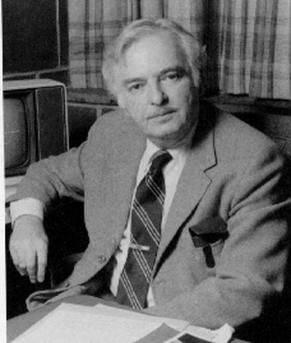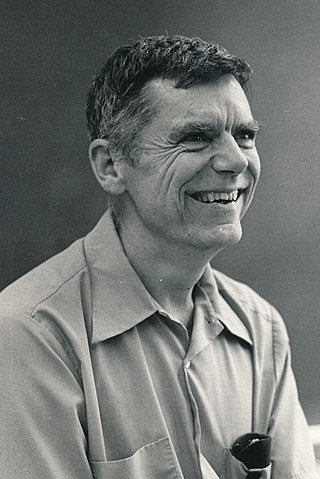Related Research Articles

Discrete mathematics is the study of mathematical structures that can be considered "discrete" rather than "continuous". Objects studied in discrete mathematics include integers, graphs, and statements in logic. By contrast, discrete mathematics excludes topics in "continuous mathematics" such as real numbers, calculus or Euclidean geometry. Discrete objects can often be enumerated by integers; more formally, discrete mathematics has been characterized as the branch of mathematics dealing with countable sets. However, there is no exact definition of the term "discrete mathematics".

A finite-state machine (FSM) or finite-state automaton, finite automaton, or simply a state machine, is a mathematical model of computation. It is an abstract machine that can be in exactly one of a finite number of states at any given time. The FSM can change from one state to another in response to some inputs; the change from one state to another is called a transition. An FSM is defined by a list of its states, its initial state, and the inputs that trigger each transition. Finite-state machines are of two types—deterministic finite-state machines and non-deterministic finite-state machines. For any non-deterministic finite-state machine, an equivalent deterministic one can be constructed.

Functional analysis is a branch of mathematical analysis, the core of which is formed by the study of vector spaces endowed with some kind of limit-related structure and the linear functions defined on these spaces and suitably respecting these structures. The historical roots of functional analysis lie in the study of spaces of functions and the formulation of properties of transformations of functions such as the Fourier transform as transformations defining, for example, continuous or unitary operators between function spaces. This point of view turned out to be particularly useful for the study of differential and integral equations.

Linear algebra is the branch of mathematics concerning linear equations such as:

Thomas L. Saaty was a Distinguished University Professor at the University of Pittsburgh, where he taught in the Joseph M. Katz Graduate School of Business. He is the inventor, architect, and primary theoretician of the Analytic Hierarchy Process (AHP), a decision-making framework used for large-scale, multiparty, multi-criteria decision analysis, and of the Analytic Network Process (ANP), its generalization to decisions with dependence and feedback. Later on, he generalized the mathematics of the ANP to the Neural Network Process (NNP) with application to neural firing and synthesis but none of them gain such popularity as AHP.

John George Kemeny was a Hungarian-born American mathematician, computer scientist, and educator best known for co-developing the BASIC programming language in 1964 with Thomas E. Kurtz. Kemeny served as the 13th President of Dartmouth College from 1970 to 1981 and pioneered the use of computers in college education. Kemeny chaired the presidential commission that investigated the Three Mile Island accident in 1979. According to György Marx he was one of The Martians.

Athanasios Papoulis was a Greek-American engineer and applied mathematician.
The Leroy P. Steele Prizes are awarded every year by the American Mathematical Society, for distinguished research work and writing in the field of mathematics. Since 1993, there has been a formal division into three categories.
Business mathematics are mathematics used by commercial enterprises to record and manage business operations. Commercial organizations use mathematics in accounting, inventory management, marketing, sales forecasting, and financial analysis.
John Tinsley Oden was an American engineer. He was the Associate Vice President for Research, the Cockrell Family Regents' Chair in Engineering #2, the Peter O'Donnell, Jr. Centennial Chair in Computing Systems, a Professor of Aerospace Engineering and Engineering Mechanics, a Professor of Mathematics, and a Professor of Computer Science at The University of Texas at Austin. Oden has been listed as an ISI Highly Cited Author in Engineering by the ISI Web of Knowledge, Thomson Scientific Company.
Harley M. Flanders was an American mathematician, known for several textbooks and contributions to his fields: algebra and algebraic number theory, linear algebra, electrical networks, scientific computing.

Applied mathematics is the application of mathematical methods by different fields such as physics, engineering, medicine, biology, finance, business, computer science, and industry. Thus, applied mathematics is a combination of mathematical science and specialized knowledge. The term "applied mathematics" also describes the professional specialty in which mathematicians work on practical problems by formulating and studying mathematical models.

Gerald L. Thompson was the IBM Professor of Systems and Operations Research (Emeritus) in the Tepper School of Business of Carnegie Mellon University.
Electrochemical engineering is the branch of chemical engineering dealing with the technological applications of electrochemical phenomena, such as electrosynthesis of chemicals, electrowinning and refining of metals, flow batteries and fuel cells, surface modification by electrodeposition, electrochemical separations and corrosion.

James Laurie Snell was an American mathematician and educator.
In probability theory, Kemeny’s constant is the expected number of time steps required for a Markov chain to transition from a starting state i to a random destination state sampled from the Markov chain's stationary distribution. Surprisingly, this quantity does not depend on which starting state i is chosen. It is in that sense a constant, although it is different for different Markov chains. When first published by John Kemeny in 1960 a prize was offered for an intuitive explanation as to why the quantity was constant.

Philip Gibson Hodge Jr. was an American engineer who specialized in mechanics of elastic and plastic behavior of materials. His work resulted in significant advancements in plasticity theory including developments in the method of characteristics, limit-analysis, piecewise linear isotropic plasticity, and nonlinear programming applications. Hodge was the technical editor of American Society of Mechanical Engineers Journal of Applied Mechanics from 1971-1976. From 1984 to 2000 he was the secretary of the U. S. National Committee on Theoretical and Applied Mechanics, its longest serving Secretary. In 1949 he became assistant professor of Mathematics at UCLA, then moved on to become associate professor of applied mechanics at Polytechnic Institute of Brooklyn in 1953, Professor of Mechanics at Illinois Institute of Technology in 1957, and professor of mechanics at the University of Minnesota in 1971, where he remained until he retired in 1991. After retirement he was professor emeritus at the University of Minnesota and visiting professor emeritus at Stanford University.
Stanley Jerome Farlow is an American mathematician specializing in differential equations. For many years he has been a professor at the University of Maine.
Design optimization is an engineering design methodology using a mathematical formulation of a design problem to support selection of the optimal design among many alternatives. Design optimization involves the following stages:
- Variables: Describe the design alternatives
- Objective: Elected functional combination of variables
- Constraints: Combination of Variables expressed as equalities or inequalities that must be satisfied for any acceptable design alternative
- Feasibility: Values for set of variables that satisfies all constraints and minimizes/maximizes Objective.
Marvin David Marcus was an American mathematician, known as a leading expert on linear and multilinear algebra.
References
- ↑ Duncan Luce (1957) American Mathematical Monthly 64:688
- ↑ Mathematics Magazine 30(5):272
- ↑ H.E. Chrestenson (1964) American Mathematical Monthly 71(7): 813
- ↑ H.J. Ricardo (1975) American Mathematical Monthly 82(6): 681–4
- ↑ G.M. Kaufman (1963) American Mathematical Monthly 70(10): 1116
- 1 2 3 4 G. C. Dorner (1971) Mathematics Magazine 44(4): 223–6
- ↑ J.D. Emerson & K. Larson (1981) American Mathematical Monthly 88(5): 357